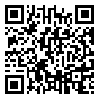BibTeX | RIS | EndNote | Medlars | ProCite | Reference Manager | RefWorks
Send citation to:
URL: http://jhsw.tums.ac.ir/article-1-12-en.html
Introduction: Nowadays, in many different fields of chemical agents several experimental researches is being done on volatile organic compounds using gas chromatography, which is time consuming and expensive methods. Photo ionization detector as an alternative method is used by researchers in this field. This feasibility study was conducted to replace the photo ionization detector with gas chromatography.
.
Material and Method: In this study, after making pre-determined concentrations of Xylene, the results of measurements using photo ionization detector and reference method were compared. This comparison was done in 4 humidity levels and 3 concentration ranges.
.
Result: The results showed significant differences in photo ionization detector readout and the reference method. However correlation coefficient of two methods were more than 0.99 in all cases regardless of the humidity rate.
.
Conclusion: Although the results obtained by the photo ionization detector are different from those extracted from the reference method in the current study, due to linear response of the method correlation coefficient was at good level. Consequently, in case of studying concentration changes in a research, this alternative method would be applicable, otherwise calibration of the photo ionization detector with the target material is recommended.
| Rights and permissions | |
 |
This work is licensed under a Creative Commons Attribution-NonCommercial 4.0 International License. |



